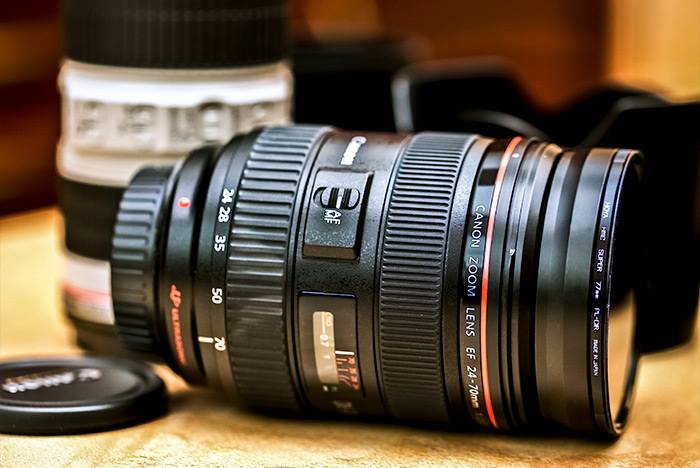I’ve got camera lenses on the mind. I’m on the hunt for a new lens and I’ve decided it’s going to be a prime lens. I’ve had a few of these in the past, but I’ve sold them all off. Currently, all I have are zoom lenses. I go back and forth between which is better because they both have their good points as well as their bad points. I’ll tell you though, I think I’m ready for another prime and below, I’ll tell you why.
In today’s post, I’d like to discuss a few different points that led me to the decision of wanting to purchase a prime lens. I won’t go into any “cons” because I’ve already done that in other posts. As for today, I think I’m just going to walk through my thought process more than anything else. I’d like to discuss what’s important to me when it comes to this type of thing.
Why I’m Looking for a Prime Lens
I’d like a good walk around lens. I’m not looking to sell my photographs to National Geographic or anything, but I do want as high a quality as I can get. I’m looking for simplicity and clarity. And some other things that I’ll list down below.
Simplicity is Key
What I think I’d like is the opposite of a zoom lens. With zoom lenses, I’m so used to reaching into my bag and pulling out a big thing that I have to attach to my camera. During that attachment, I often twist the lens and it actually zooms in my hand. I’m at a place where I don’t want that to happen anymore. Prime lenses also have less overall glass inside of the lens tube than zooms do. Because of that, they oftentimes offer sharper photographs. I also find myself taking the same focal length shots over and over again, so the zoom on my current lenses sometimes isn’t necessary. It just has more moving parts to deal with.
Prime Lenses Are Faster
Have you even heard the term “fast” when it comes to photography? Such as, “Boy, that’s a really fast lens!” This “fast” refers to the largest available aperture size for a lens. If you want to know how they came up with this term, go ahead and set your camera’s aperture to F/29 and then try to take a photo. Take notice of how fast the shutter speed is. Most likely, it’s going to be terribly slow. Fast lenses have larger apertures, which translates into fast shutter speeds. They’re great for action.
So what I want is a fast lens. My current zoom offers a maximum of an F/3.5 aperture setting and I’d like to get much bigger than that. I’m thinking either an F/1.2 or an F/1.8. That would do me well. I’d like action and agility and tons of light. I want a lens with a huge aperture so I can enjoy more night time photography and all that comes with it.
Size & Weight
Prime lenses are oftentimes much smaller and lighter than zoom lenses. This makes a huge difference when trying to fit all my gear in my camera bag as well as the total weight of my camera when shooting subjects. I also do a lot of video work where I mount my camera to the inside of the windshield of my car. Trust me when I say this, my window camera mount doesn’t like my big heavy lens that’s currently attached to my camera. It bounces around and creates tons of camera shake. I think a lighter lens will help cure that. And since I don’t zoom in and out while I’m driving, a fixed lens should be perfect for something like this.
I Want to Move Around
I think I’m getting tired of relying on my zoom lens to do the work of photography for me. With prime lenses, I’m required to move around to get the shot I want. With zoom lenses, I don’t have to do that nearly as much and I’m telling you, every time I sit still and simply zoom into something, I feel like I’m cheating. I would like to get more involved with photography again. I want to become part of the shot. Now don’t get me wrong, I obviously can’t use a prime lens everywhere, but for the situations I can use one, I’d like to.
A Fixed Aperture
Do you have a zoom lens? Have you noticed your scene’s lighting change as you zoom in and out with your lens? This is because aperture size often changes as the lens barrel extends and shrinks. This can get confusing to photographers and because of that, many of them choose to deal with prime lenses on a regular basis. With prime lens, there is no barrel extension. There is no zoom, so the aperture size stays the same until you tell it otherwise. This is huge for those who use Aperture Priority mode a lot or for those who would like to get into that.
Popular Prime Lens Sizes
As I look around for my next lens, I think about what my most popular focal lengths are. I’m usually in one of three places, 35mm, 50mm and 85mm or there about (for a full frame sensor). I do zoom in closer than that and when I do, I’m happy to use a zoom lens. Ultimately though, I think I’d like to pick up three prime lenses of these sizes. These are pretty much what people out there are using. For my first prime though, I think I’ll go with the 35mm because with my cropped sensor, that will give me a 56mm focal length. I’ll deal with the other two sizes later on. For now, a middle of the road, very popular lens will do me just fine.
Well there you have it. A small glimpse of what’s going through my mind today. I hope I shared some good information with you and if you have any questions about this section of my post or lenses in general, please feel free to ask down below. Thanks for reading!
What’s the Benefit Of Owning a Prime Lens?
Purchasing a camera body is sometimes easier than purchasing a camera lens. When it comes to camera bodies, sure, there are many to choose from, but you generally know what you want. You at least have a price range that funnels you into a certain make and model. When it comes to lenses though, things are all over the place. The range of prices is so wide and the selection is even wider. And to top things off, there’s either prime or zoom to deal with. It can become too much if you sit there and read reviews for too long.
I’ve written posts about zoom lenses versus prime lenses in the past. I’ve even written about depth of field and above, I wrote about the benefit of prime lenses in general. In this section, I’d like to do a recap of my most recent writing (above).
So the question is; what’s the benefit of owning a prime camera lens over a zoom one? Personally, I’d say there are many benefits and I’ll briefly cover them here.
Prime Lenses Have Fewer Moving Parts
There are mechanically fewer pieces of glass and moving parts in prime lenses. This makes them not only less expensive, in general, than zoom lenses, but it also allows them to offer higher quality photographs because there’s less compromise. Every time a lens is zoomed to capture an image, the cost is a bit of quality.
Prime Lenses Can Have Huge Apertures
If you look around online, you’ll see lots of zoom lenses that have maximum aperture sizes of f/3.5 through f/4.5. On the prime lens side, you’ll see tons of lenses with maximum aperture sizes of f/1.2, f/1.8 and f/2.8. These are fairly large apertures that these lenses have and they let in tons of light, which can hasten the shutter speed.
Prime Lenses are Awesome in the Dark
Because of all that extra light prime (fixed) lenses let in, shutter speeds can be faster. It’s not uncommon to see a photographer use a prime lens indoors at birthday parties and weddings. With smaller aperture sizes, a photographer will either have to slow their shutter speed down, increasing the risk of motion blur, or increase their ISO setting, increasing the risk of grain and noise. Big apertures equal faster shutter speeds and lower ISO values.
Prime Lenses are Small & Light
You have seen huge zoom lenses. I’m sure you have. When was the last time you’ve seen a huge prime lens? While larger prime lenses do exist, a good majority of them are much smaller and lighter than their zoom counterparts. This translates into easier storage and carrying around.
Prime Lenses are Perfect for Creativity
It’s easy to get very lazy when you’re using a zoom lens. I certainly get lazy when I do. With a prime lens though, you need to move your body to get the shot you want. I can’t tell you how many stories I’ve heard about how someone’s photography has gotten markedly better, simply by using a prime lens.
Prime Lenses Have Fixed Apertures
When you zoom in and out, you probably notice how the lighting of the scene viewed through your lens changes. That’s the aperture size changing , which, with a zoom lens, can throw you off if you’re not paying attention. While you may think you’re getting that specific depth of field you’re after, you may not be, just because you zoomed in or out. When it comes to prime lenses, there’s obviously no zoom, which requires no automatic aperture size changes, which results in constant and predictable scene lighting. This is a good thing.
If you’re trying to decide between getting a zoom or prime lens, I hope this section helped you in some way. Let me know your thoughts below. Thanks!
Prime Lenses + Shallow Depth of Field: A Good Combination?
There’s been an online trend that I’ve seen evolve through the years that has amateur and professional photographers alike trying to out “shallow depth of field” one another. There are actually websites popping up that are dedicated to how thin the plane of focus one can garner. It’s pretty strange because, from personal experience, having a depth of field that’s too thin just isn’t a good thing. Hardly anything shows up in focus. I face this sort of thing when I use my magnifying lenses. Those filters really cut down the sharp areas of a photo. They end up being hardly even there.
That said, if you’re looking for a shallow depth of field, prime lenses are the way to go. In many cases, you simply can’t open the aperture of a zoom lens up enough to be anywhere near comparable to how wide you can make the aperture of a prime lens. I’ve seen prime lenses with apertures that go all the way down to f/1 and more commonly, f/1.2. Compare that with the average zoom lens’ widest aperture of f/4. If you remember, every time a camera goes down or up a stop, it’s either letting in half as much or twice as much light. There’s a big difference between f/1.2 and f.4. Creative difference.
When dealing with video, shallow depth of field can offer ultra creative and unique results, but it can also get in the way. Think about the “plane of focus” as a big sheet of glass. If two people were holding that glass up in front of you, as if you were looking out a window, the thickness of the glass could be considered your depth of field (the plane that’s sharp in an image). If you were shooting at f/1.2, the glass would be very thin. Maybe a few inches thick, depending on how far away you were standing from it. If you were shooting with f/4 or f/5.6, the glass would be much thicker. So if your subject was somehow trapped inside that thickness of glass, that’s what would be in focus.
If you think about taking video, working with a shallow depth of field can make your footage stand out. Picture something moving slowly from an area that’s out of focus to an area that’s in focus. That’s some interesting video right there. But now think about interviewing someone or walking through a house while taking video. Would you really want a very shallow depth of field? Can you imagine how distracting that would be? Imagine capturing someone on video while they’re sitting in a chair. Their face is in focus one moment, but then it’s completely out of focus the moment they lean back. That’s definitely not an ideal situation.
There are many times you’d want to open your prime lens up all the way while capturing video. Product footage is a good time. If you’ve got product sitting on a table and you’re moving from one item to the next, it may be perfectly fine to have the items that aren’t being featured at the moment to go out of focus. It’s actually quite common for that to occur because it allows the emphasis to be placed squarely on the item that’s being featured. But like I said above, when you’ve got moving objects, people or pets that are supposed to be in focus the entire time, keep your eye on that aperture. Remember, just because you’ve got a sweet prime lens that can open up crazy wide, it doesn’t mean that you need to take advantage of that feature when it’s not appropriate. I know, easier said than done.
So here’s a question for you. What if you’re taking video and your scene calls for a deeper depth of field? You need more sharpness in your area of activity. What can you do about that? Well, the first thing I would do is go up a few stops with my aperture size. So if I was shooting at f/2, I would try to bump that up to f/4 or f/5.6, so my depth of field widens a fair amount. I know not nearly as much light will be let in due to this setting change, but to counter that, I could always compensate by adjusting my ISO the same number of stops. Or, I could add more light to the scene. You know, physical light. It’s not always about making trade offs inside of the camera. We can just as well alter the physical environment as well.
The great thing about prime lenses when it comes to video is that they offer tons of flexibility. If you need a wide aperture, it’s there. If you need to close it up some, you can do that too. And again, if you need to close it up, you can always compensate with either a higher ISO value or more physical light. Just some thoughts for today.
What do you have to say about this topic? Do you like shooting video with prime lenses? How do you deal with lighting and depth of field? What’s your go-to setting combination? I’d love to know. Thanks!
What’s the Difference Between a Zoom Lens & a Prime Lens?
I’ve been working with cameras and lenses for quite a few years now and to this day, I still have a battle raging inside of me. Which is better, a zoom lens or a prime lens? And what’s worse, as I sit here and type, I can’t give you a definitive answer. Both options are really good and both options serve their own purposes. I guess it boils down to what you need your lens for and what you plan on shooting.
In this section, I’d like to cover a few things. First, I’ll explain the difference between prime and zoom lenses and then after that, I’ll offer up some opinions on what each type of lens is good for. By default, if one lens is good for one thing, the other isn’t as good, so I won’t even bother telling you what each lens isn’t good at. Well, maybe I’ll touch on that a little bit, but I won’t dwell on it.
The purpose of this post is to give an initiation of sorts to newer, less experienced photographers or individuals who may just be entering the industry now. I can remember back when I first began learning about lenses and I recall the feeling of being overwhelmed. It’s easy to become overwhelmed at that stage and the sheer number of opinions coming from each and every direction makes things downright unenjoyable. My goal here is to help you make a decision when it comes to lens choice. Many people simply have no idea why they’re using what they are and it’s my hope to clarify a few things.

Prime Lenses Versus Zoom Lenses
Here’s the deal. A prime lens is a lens that has a fixed focal length and a zoom lens is a lens that has a variable focal length. This length I’m referring to here is generally referred to in millimeters (mm). This is the “mm” in the statements you here out there, such as, “I’m picking up a sweet 50mm prime lens tomorrow.” Or, “My friend tells me his 50-300mm zoom lens is the best he’s ever owned.” Lots of beginning photographers haven’t yet learned what the mm that’s written on the side or front of a lens means, so I hope this helps.
What is focal length and how does it differ between these two lenses? Focal length certainly isn’t how long the physical lens is. That’s what many folks think and it’s not true. What focal length is, is the distance from the sensor of the camera to the point in the lens where light rays converge to create a sharp image. So basically, is simple terms, the “mm” that’s written on a lens means that the distance from a certain point in a lens to the actual sensor in the camera is a set value. This value can either be fixed, as in a prime lens or change, as in a zoom lens.
If you’ve ever used a camera before that had a zoom lens attached to it, you may have noticed something very interesting happen as you zoomed in and out. As you zoom in, the, what’s called the “angle of view” gets narrower and narrower. Objects in the scene also become larger and larger, or as what’s referred to in the camera world, “magnified.” These characteristics are true for longer focal lengths. So if you compared a 50mm lens to a 300mm lens, the 300mm lens would have a much narrower angle of view and the objects that are seen through the lens would be rather large and magnified. Conversely, the 50mm lens would have a much less magnified view and you’d see a lot more of the scene. The angle of view would be much wider.
What’s So Great About a Zoom Lens?
I’ll admit, I use a zoom lens. I’ve tried many in my day and I’ve settled on the Canon EF-S 18-135mm f/3.5-5.6 IS STM lens. I’m sure I’ll pick up another type of zoom with different characteristics one day, but I get so much versatility with this one, it’s difficult to imaging why I would do this. Most likely, I’ll buy something larger and more powerful.
The reason I use my zoom lens is simple; it can do almost anything. I can take fairly wide shots and I can zoom in and magnify something so it appears very up close. Since I do a lot of outdoor photography, this versatility is important. I don’t like changing lenses too much because it’s sort of a pain and dust and dirt can make its way into the camera every time the lens is removed (especially outdoors), so I like to keep that to a minimum. But really, it’s the zooming I like. Even for the same subject, I’ll take some wide shots of it as well as some close up ones. And I don’t even have to move or change position while I’m doing that. Inventing the zoom lens was a wonderful thing.
There are a few issues with zoom lenses though. They can be quite large and cumbersome at times. They have lots of moving parts that can malfunction, flat out break or not work as well as you’d expect them to. For instance, on my Canon zoom, the lens tends to zoom itself in when I don’t want it to during photo shoots where I’m facing the ground from up above. This is called lens creep or zoom creep and it’s so annoying. The lens barrel basically extends itself due to its own weight.
Zoom lenses are versatile though. You have to give them that. They’re great for landscape and portrait shots and all you need is one lens most of the time. This is another problem with them though. They tend to make the photographer somewhat lazy. Sure, I’ll admit that photographers look really cool when they’re operating those big lenses, but when was the last time you saw a photographer moving around the scene, trying to get the best shot, with a zoom lens? They do that, but not as much as they would if they were using a prime lens. You can pretty much sit down in one spot all night and take all different types of photos with a zoom. I’m not sure how creative those photos would be though.
What’s So Great About a Prime Lens?
Prime lenses don’t zoom. You are the zoom. If you want to take a shot that’s closer up to the subject, you have to walk nearer to that subject. This is quite the surprise to many people after they’ve gotten used to using a zoom lens. I’ve seen friends use a prime lens for the very first time after using a zoom lens for years and instinctively go to twist the lens barrel. Of course, there was no twisting to be had. The lens didn’t zoom.
Prime lenses have not nearly as much versatility as zoom lenses do. If this is the case, it begs the question, why on earth would anyone use a prime lens? There are actually many reasons, which I’ll explain below.
Let me make a comparison before I go into my explaining though. Picture owning a really nice and sporty BMW car. If you aren’t aware, BMWs handle the road like they’re on rails. They’re stable and firm and you can take corners like it’s nobody’s business. Try driving a BMW and you’ll see what I’m talking about. A corner that a Honda Accord can handle at 40mph, the BMW can handle at 100mph. It’s an incredible feeling.
Imagine being at the car dealer as you’re purchasing the BMW. The salesman asks you what type of tires you’d like on the car. He says, “Well, the big “all-purpose” tires can deal with so many situations. They’re good in the snow, they’re fine on sand, they’re comfortable because they’re so large (they can absorb any bump in the road) and you won’t even notice you’re traveling in the car because they’re quiet.” You’re thinking, “Wow, I really want those all-purpose tires. They sound great for so many situations.” Since you’re curious though, you ask about the other option. “Well,” says the salesman. “The other option is a more streamlined tire. It’s thin and firm and it’s not a good snow tire. With these tires, you’ll feel every bump in the road and they’re sort of loud. You will, however, have the ability to handle corners at twice the speed of the all-purpose tires and the overall speed rating increases dramatically with these tires as well.”
So, which type of tire would you choose? The “all-purpose” tires or the “sport” tires. By the way, the all-purpose tires are comparable to the zoom lens and the sport tires are comparable to the prime lens. Many people like the sport tires because they want the feeling of the road. Much like prime lenses that force you to move around your subject for the most creative types of shots. Like sport tires’ handling abilities, prime lenses have apertures that can open up very wide (f/1.4 to f/2.8), which is great for low light situations (performance). They’re also extremely clear. They’re small, compact and light. They’re easy to carry around.
Large apertures are great for creativity and performance because they can handle low light situations much more elegantly than zoom lenses with smaller maximum aperture sizes can. With a larger aperture, you can use a faster shutter speed with a lower ISO setting. This means that you’ll have less grain in your photos and less camera shake or blur. Also, you can achieve a wonderfully shallow depth of field and a very pretty bokeh with a large aperture setting, so this is a definite consideration when deciding on what type of lens you’d like to purchase. Personally, I like large apertures for the amount of light the let in. That’s a huge selling point.
In the past, it was considered common knowledge that prime lenses took higher quality photos when compared to zoom lenses. The reason for this was because the prime lens contained fewer lens elements inside the lens barrel. The lenses were simpler and because of their “single focal point” optimization; their resulting photos were visibly sharper than their zoom counterparts.
It’s my understanding that these differences have been minimized over the past few years. Lens manufacturers have reduced any quality discrepancies between corner to corner sharpness and many zoom lenses today are comparable to many prime lenses at equivalent focal lengths. And in some cases, the zoom lens outperforms the prime lens, so this is something you should surely look into, if this is a consideration.
Overall, my advice is to own at least one great zoom lens and one great prime lens. As I told you above, I still can’t decide which is better, but I can’t imagine life without my zoom. I do want to pick up a high quality 35mm prime though. Perhaps I should start looking into that.
If you have any questions regarding this section, please don’t hesitate to leave them for me in the comment section below. Thanks for reading!
Do Prime Lenses Cost More Than Zoom Lenses?
For the longest time, I couldn’t make heads or tails of the cost of camera lenses. It seemed as though the prices were completely arbitrary and made no sense. As I got better at photography though and as I actually used a wider variety of lenses, I began to learn exactly what the seemingly strange pricing structure was all about.
If you go into a camera shop today or if you look around online for lenses, you’d likely think that prime lenses cost a heck of a lot less than their zoom lens counterparts. What you find though is eye-popping. Some of the prime lenses available today are astronomically priced. The question is, why is this? There are fewer moving parts in a prime lens and they seem so much less complicated. Why do some prime lenses cost so much? And I’m not talking just a little bit more in some cases. Oftentimes, these lenses cost a lot more.
It seems as though apertures are able to open up wider in prime lenses than in zoom lenses. With these ultra-wide apertures comes some serious price increases. Some prime lenses are actually quite affordable, such as the Canon 24mm, 40mm and the 50mm. These are priced between $125 and $175. They are bare bones lenses though. When you get down to the f/.9 levels and very high quality glass, the price shoots right up.
My theory is that, sure, these higher quality lenses with huge apertures cost more to make and include more technology and that’s why the prices are so high, but you have to think about supply and demand here as well. If Canon is making one million 50mm f1/8 lenses per year and people are scooping them up because they’re less involved to make with a price reflecting that, the demand is pretty big. If only 1,000 of their higher quality lenses are selling, Canon has got to charge a lot more per lens because of economies of scale. The quality is higher on these lenses, but the demand is also a lot less because of price, which, in turn, jacks the price up even more.
The trick is to find used high quality lenses that are in excellent condition. Also consider giving a less pricey lenses a try. I can tell you that some of the lesser quality ones offer outstanding photography. You can even rent some of the more expensive lenses if you aren’t planning on using it too much. Another idea is to purchase one with a friend and then share it among one another. Call it a “share.” Remember, many older style lenses fit on newer cameras, so if you don’t mind manually adjusting the aperture and focus, you might want to give one of these a try. You can save tons of money this way.
So, the answer to the question in the title is yes, prime camera lenses can certainly cost more than zoom lenses, especially when you get up there in the aperture size and the quality. But, some zoom lenses can cost a fortune as well, especially when you get into those huge telephoto zoom ranges. My advice with prime lenses would be to look for value, meaning, find the in between really popular lens and get that. The reason they’re so popular is because of the price, which in turn allows the company making the lens to keep that price down. Conversely, because of their simplicity, the company is able to keep the price down, which makes the lens more popular. It’s sort of a weird loop.
What do you think about prime lenses? Do you prefer them over zoom lenses? What’s your favorite lens? Which do you find yourself keeping on your camera most of the time?
The Canon 24mm f/2.8 is a Very Sharp Prime Lens
UPDATE: After I wrote the sections above a while ago, I bought a nice prime lens. Please read about my experience with it below.
I’m having a ball with my new Canon 24mm f/2.8 prime lens. It seems to be the perfect lens to carry around while photographing pretty much anything. I’m still testing it out, so I’m finding myself taking random shots all over my property. Today, I stopped near our front garden and captured a few flowers and leaves with water droplets on them. I can’t get over how sharp this thing is. I get right in there with my camera and it seems to pick up every last detail. I wonder what it would be like if I actually used a tripod and set things up properly. As it stands, I’ve been doing only handheld, so I’m sure the results aren’t as sharp as they could be, which is pretty crazy.
While I was merely trying to see how clear I could get the images, I also tested out the larger f/2.8 aperture. I like using that because of the shallow depth of field as well as the faster shutter speed I’m able to conjure out of the camera as a result. It’s nice to be able to play the two against each other.
These first two photos are of some pink rosebuds that are beginning to bloom. I don’t think you can see it as pronounced as I could when I zoomed into them, but the detail is incredible. Especially on the stems.

Camera: Canon Rebel T7i
Focal Length: 24mm
Aperture: f/4.5
Shutter Speed: 1/100
ISO: 100

Camera: Canon Rebel T7i
Focal Length: 24mm
Aperture: f/5
Shutter Speed: 1/100
ISO: 100
This next photo is of some water droplets I saw on a leaf. The image was actually much larger, but I cropped it down. That didn’t seem to make any difference in the quality. It was still very good. Also, I have to say that this image is very sharp even though the lens has no image stabilization. With a 1/60 shutter speed, I seemed to do pretty well.

Camera: Canon Rebel T7i
Focal Length: 24mm
Aperture: f/4
Shutter Speed: 1/60
ISO: 100
This is the quintessential pink rosebud picture. There’s not a lot to tell you about this one besides the fact that it looks great.

Camera: Canon Rebel T7i
Focal Length: 24mm
Aperture: f/5
Shutter Speed: 1/125
ISO: 100
This is a photo of a partial purple lupine flower. While it may look like there’s a lack of sharpness in this one, there are some good areas. It’s the close range that made the depth of field so shallow. Even at f/4.5, I couldn’t muster much sharpness. If I had spent more time with this and used a tripod, I think I would have been able to focus on some better areas of the flower.

Camera: Canon Rebel T7i
Focal Length: 24mm
Aperture: f/4.5
Shutter Speed: 1/80
ISO: 100
Okay, for these next two images, I brought the aperture all the way down to f/2.8. I wanted to see how fast I could get the shutter speed under the same conditions as the other shots. It was slightly faster. Nothing to write home about. You can tell the aperture was wider because the depth of field was only about 1/2 inch deep at approximately eight inches away.

Camera: Canon Rebel T7i
Focal Length: 24mm
Aperture: f/2.8
Shutter Speed: 1/125
ISO: 100

Camera: Canon Rebel T7i
Focal Length: 24mm
Aperture: f/2.8
Shutter Speed: 1/250
ISO: 100
Do you own this lens as well? What are your thoughts on it? I’d love to read some other opinion. I’m very happy with mine.

Leave a Reply